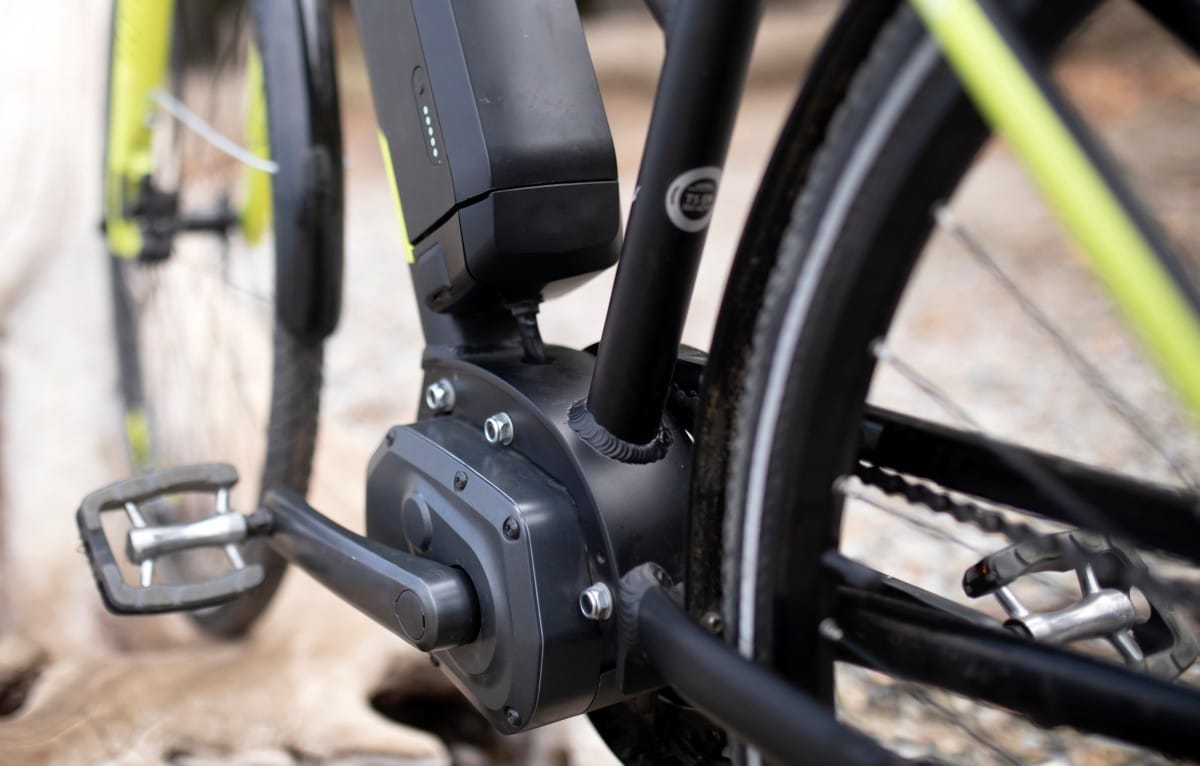The Dangers of E-Bikes
The electric bicycle is here to stay. It’s a convenient way to get around, especially in a heavily-populated city, and it can be considered a decent form of exercise. However, as with any motor-assisted vehicle, they can cause accidents.
In 2022, especially after the pandemic, we are seeing more e-bikes on the road than ever. Next year, it is expected that e-bike sales will reach around 40 million units worldwide. It’s no wonder, then, that we may be seeing more injuries and accidents because of these vehicles.

What is an e-bike?
An e-bike is simply a bicycle with an electric motor. It helps propel the rider, usually by pedaling or using the throttles. The pedals are functional, and the battery is rechargeable so there is no need for gasoline. The fact that e-bikes are extremely convenient and environmentally friendly is a big reason as to why many people choose these as opposed to motorcycles and cars. There are e-bikes designed for commuting, cargo, road, gravel, mountain terrain, and more. They are seen as much more affordable and suitable than other vehicles in the long run. E-bikes have been around for many years, but with each passing year, they improve and gain popularity.
In regard to how they are classified under federal law, e-bikes are categorized as wheeled vehicles. There are three different classes for e-bikes:
- Class 1: The motor only helps when the rider is pedaling. There are no throttles. Once 20 mph is reached, the motor stops assisting. Excellent for roads and bike paths.
- Class 2: Has a throttle that helps propel the rider forward without needing to pedal. Once 20 mph is reached, the motor stops assisting.
- Class 3: Has a speedometer, but no throttles, so it works when the rider pedals. Once 28 mph is reached, the motor stops assisting. Excellent for commuting.
How does the e-bike throttle control compare to other bikes?
Bicyclists are used to riding at their own pace, without the use of any motor or extra power. They gain momentum slowly and keep that up through the sheer strength of their leg muscles. So, what happens when they suddenly gain hold of the throttle on an e-bike? They can get throttle-happy.
When someone is just starting to try out an e-bike and they’re in a still position, they might not even know the e-bike motor is on because of how silent it is. They suddenly tug on the throttle at full power, and both the rider and the e-bike quickly propel forward. We often see this happening in funny home videos, but the reality is that it can happen to anyone who is inexperienced. A seemingly humorous and innocent mistake can lead to a disastrous accident when you least expect it. It can lead to scrapes, burns, and serious cuts for both the rider and anyone who happened to be standing in front of the e-bike.
Compared to motorcycles and ATVs, some e-bikes may have more sensitive throttles because they weigh less and have less power. Either way, no matter the level of power, if the rider is not careful with the throttles and accelerates too quickly, some people can come out hurt. The e-bike can also crash into other vehicles and cause unexpected and unwanted damages and expenses.
Can an e-bike catch fire?
As with any motor vehicle, there are risks when it comes to the battery. Aside from the obvious chance that it can give up and leave you stranded when you need the motor’s assistance the most, e-bike batteries can catch fire. It may be rare, but it can happen. It is a lithium battery, and it can erupt into flames while riding or being charged. As of November, e-bike batteries have caused 200 fires in New York City alone.
Especially while riding, this can lead to first- or even second-degree burns. The battery could explode while the rider is still on the seat, so the fire reaches the rider’s legs, feet, and possibly even the torso, depending on how bad the fire becomes. A first-degree burn can normally heal on its own, but a second-degree burn almost always requires immediate medical attention. Hefty medical bills can come from these types of burns.
Why an e-bike fire can have ripple effects
A fire from an e-bike battery also serves as a major distraction while on the road. Imagine a commuter riding their e-bike to work without any worries when suddenly the battery explodes, and their long suit pants catch fire. If they are riding in the bike lane, this event could make them stop and run into traffic out of panic. They could get hit by a car driver who was unable to react in time. The e-bike rider could also drive right into a pedestrian without thinking, only focusing on how to put out the fire that’s on their clothes.
E-bikes are the “silent assassins”
E-bikes are quiet; one overseas newspaper even referred to them as “silent assassins.” Pedestrians will unknowingly walk right into the path of an e-bike since they will not hear them coming. It can also lead to more accidents with cars. The car driver may see a bicyclist coming from far, expecting them to be going at a slow pace as bicyclists normally do. Anticipating making a right turn, the car driver crashes into the rider because they were not expecting them to come up so fast next to them. The e-bike rider did not expect the car driver to turn, assuming they had seen them riding behind them.
How to stay safe while riding your e-bike in Kansas City
While e-bikes can be exhilarating, they can be extremely dangerous and lead to accidents with other vehicles or pedestrians. Kansas City accident Injury Attorneys wants you to enjoy your ride, so we’ve compiled some helpful tips and suggestions from Bicycling.com, the National Fire Protection Agency, and the Los Angeles Times, so that you can stay safe out on the road.
- Get the right helmet and wear it. The average cyclist only travels about 10mph, but an e-bike can reach up to 30mph. So instead of a bike helmet, the LA Times suggests a U.S. Department of Transportation complaint motorcycle helmet. Make sure it fits snugly and securely, with “only one or two finger widths above the eyebrows.” Note, too, that helmets are required for riders in Missouri, so you’ll need one anyway.
- Wear protective clothing. This tip comes directly from us. As you know, our firm founder James Roswold is passionate about his motorcycle, so we all understand the importance of wearing the right type of clothing. Remember – e-bikes go fast, which means a fall can be pretty severe. Make sure your arms and legs are covered, and that your clothes allow you to move freely. You want to avoid baggy clothing, though; it can get caught in the bike parts.
- Make yourself visible. Bicycling.com suggests outfitting your bike with bells and whistles – literally – and lights, so that other people and drivers can see you. We would suggest bright clothing, too (even in daylight hours).
- Don’t overcharge your bike. The National Fire Protection Agency warns that overcharging your e-bike can actually increase the risk of a fire. So make sure you follow the manufacturer’s instructions.
- Learn and follow the rules of the road. Laws have to change as different types of vehicle take to the road, we know, but some things are always the same: stop at red lights and stop signs, use crosswalks when possible, ride with the flow of traffic (not against it), and stay off sidewalks. When there’s an available bike lane, you should use it.
One last note about Missouri’s e-bike laws, per manufacturer EVELO:
Every electric bicycle when in use on a street or highway during the period from one-half hour after sunset to one-half hour before sunrise shall be equipped with a front-facing lamp, a rear-facing red reflector, reflective material and/or lights visible from the front and the rear on any moving part of the bicyclist: and reflective material and/or lights visible on each side of the bicycle or bicyclist visible at night under normal atmospheric conditions on a straight, level, unlighted roadway.
After an accident happens on an e-bike, you may have a potential case on your hands. Let the experienced personal injury lawyers at Kansas City Accident Injury Attorneys review your situation. Contact our Kansas City, MO, office to schedule a free, no-obligation consultation.
Our other Missouri locations include Lee’s Summit, Parkville, and St. Joseph. We also have offices located in Kansas: Olathe, Kansas City, and Overland Park.

Kansas City personal injury attorney James Roswold of Kansas City Accident Injury Attorneys handles cases dealing with victims of personal injury, medical negligence, wrongful death, workers compensation, nursing home negligence, premises liability, product liability, car accident, truck accident and motorcycle accident cases.

